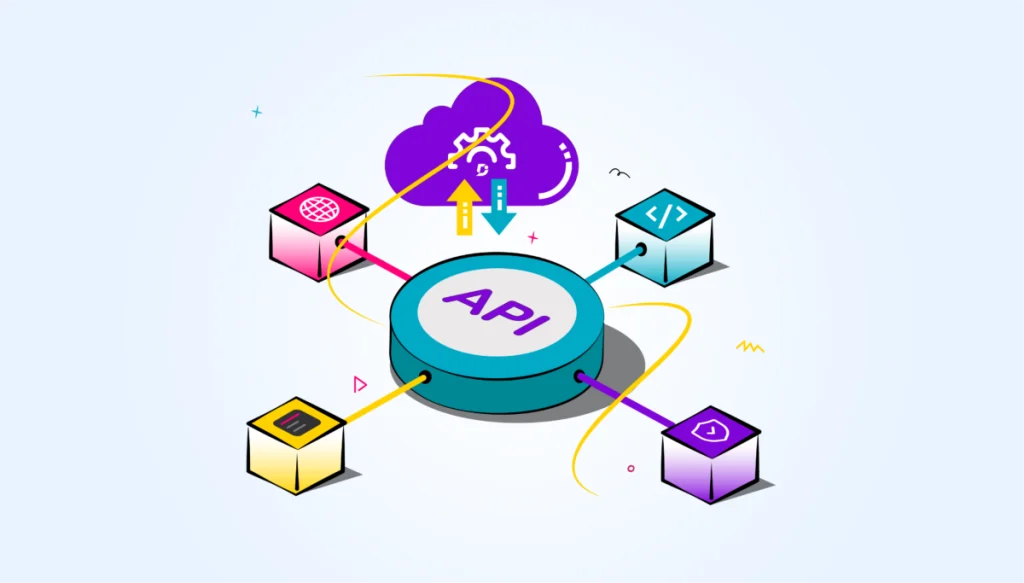As web development continues to progress, RESTful APIs have become the de facto architectural model for creating and utilizing online services. Because of its flexibility, scalability, and ease of use, representational state transfer, or REST, has become increasingly popular. This article examines the reasons why RESTful APIs are now the go-to option for developers and businesses, outlining their main benefits and the elements that have fueled their online hegemony.

1. Simplicity and Ease of Use
The simplicity and convenience of use of RESTful APIs is one of the main factors contributing to their growing popularity. Because RESTful APIs use a stateless client-server architecture, every request that a client sends to the server needs to include all the information required for the server to comprehend and handle the request. Because they are stateless, REST APIs are easy to use and develop.
The fact that REST uses common HTTP methods (GET, POST, PUT, DELETE, etc.) for communication only serves to further its simplicity. Because these techniques map to fundamental CRUD (Create, Read, Update, Delete) actions, developers may easily comprehend and utilize them. Additionally, JSON and XML are popular and lightweight data formats that are frequently used for data exchange in RESTful APIs.
2. Scalability and Performance
Scalability and performance are key design elements of RESTful APIs. Because REST APIs are stateless, the server can effectively handle a high volume of requests because each one is independent. This approach improves the system’s scalability by making it simpler to split the workload among several servers.
Furthermore, caching technologies can be leveraged by RESTful APIs to enhance their performance. Servers can lessen the strain on the backend and accelerate response times for frequently requested sites by putting appropriate caching mechanisms into place. Performance and scalability are essential for modern online applications that must manage massive data volumes and millions of users.
3. Flexibility and Extensibility
High levels of extensibility and flexibility are offered by RESTful APIs. Because they aren’t dependent on any one platform or technology, developers can utilize them with a variety of frameworks and programming languages. Because of its adaptability, REST APIs can be used for a wide range of applications, including microservices architectures, IoT devices, and web and mobile apps.
RESTful APIs can also be readily extended. It is possible to add more resources and endpoints to a system as it expands without affecting its current functionality. Businesses can modify and develop their services in response to shifting needs and market demands thanks to this extensibility.
4. Widespread Adoption and Community Support
Another important element influencing RESTful APIs’ prevalence is their broad usage. For their web services, numerous large software businesses, such as Google, Facebook, and Twitter, have embraced RESTful APIs. A vast ecosystem of tools, libraries, and frameworks that facilitate the creation and use of REST APIs has resulted from this widespread usage.
Because of the robust community support for RESTful APIs, developers have easy access to a wealth of tutorials, best practices, and documentation. This abundance of materials shortens the learning curve and speeds up development by assisting developers in understanding and implementing RESTful APIs fast.
5. Interoperability and Integration
The seamless integration of disparate systems is facilitated by the interoperability of RESTful APIs. They ensure interoperability across a range of systems by using common HTTP protocols and data formats. In today’s linked digital environment, where enterprises frequently need to integrate with third-party services, legacy systems, and external data sources, interoperability is especially crucial.
The concepts of HATEOAS (Hypermedia as the Engine of Application State) are also supported by RESTful APIs, which enables APIs to offer guidance on how to interact with the data. REST APIs are easier to use and integrate with other systems because of their self-descriptive nature, which encourages interoperability and lowers integration complexity.
6. Support for Modern Web Technologies
Modern web architectures and technologies are a good fit for RESTful APIs. They are frequently used with microservices, progressive web apps (PWAs), and single-page applications (SPAs). The decoupled architecture of these contemporary apps, in which the frontend and backend are distinct entities that communicate over the network, is in line with the stateless nature of REST APIs.
Furthermore, RESTful APIs work with a number of security protocols, including token-based authentication, SSL/TLS, and OAuth. RESTful APIs are appropriate for applications that need strong security because of these security features, which assist safeguard sensitive data and guarantee secure connection between clients and servers.
Conclusion
RESTful APIs’ widespread popularity, simplicity, scalability, and flexibility have made them the de facto web services architectural approach. They are a vital tool for developers and companies because of their compatibility for contemporary web technologies and ability to integrate systems seamlessly. RESTful APIs are anticipated to continue to be a fundamental component of web development as the digital world develops further, facilitating creative and effective applications in a range of sectors. In order to fulfill the needs of modern online applications, RESTful APIs provide the flexibility and dependability that developers need, regardless of the size of their project—from small apps to massive enterprise systems.
